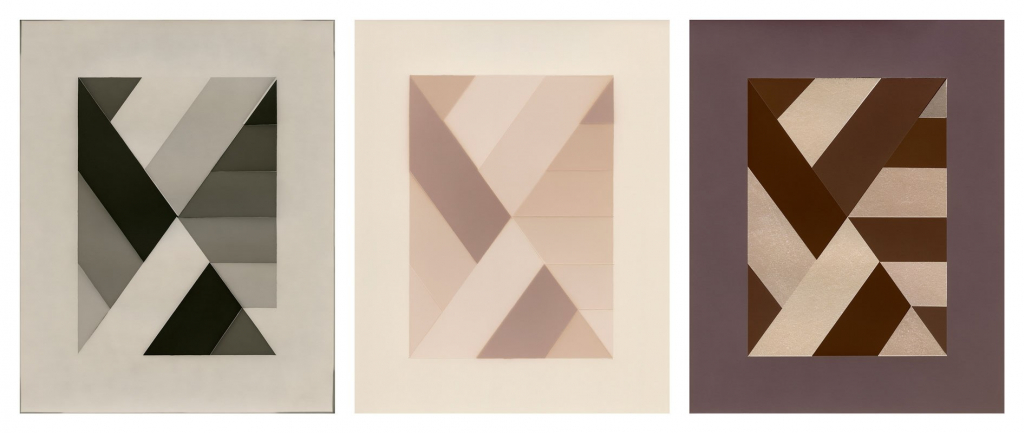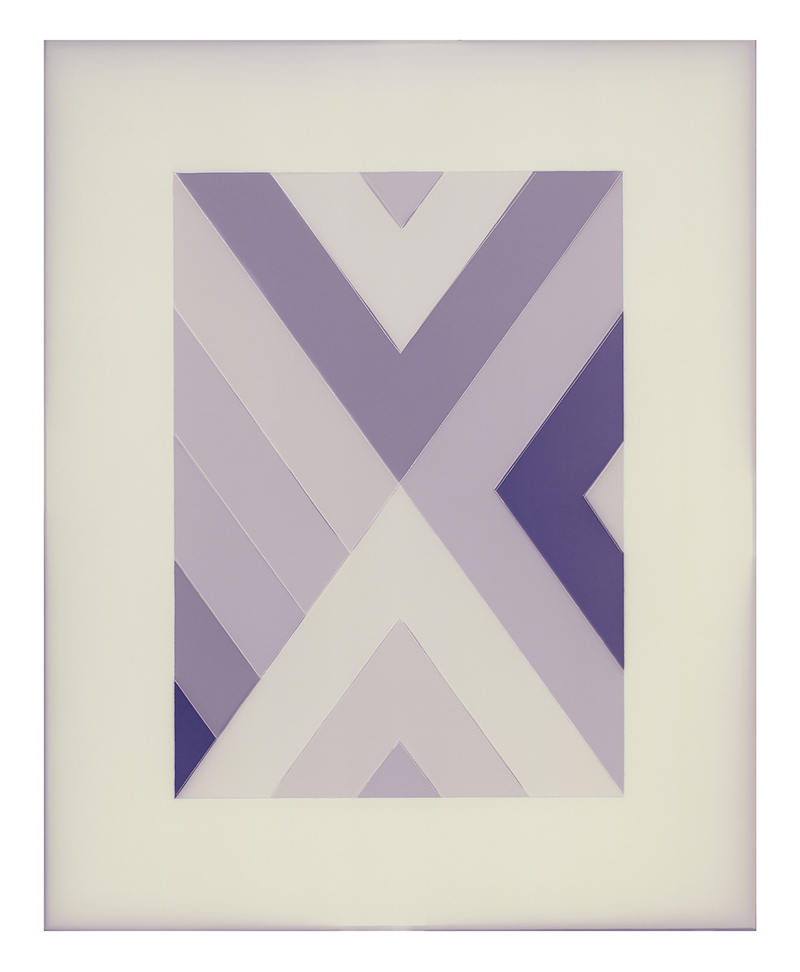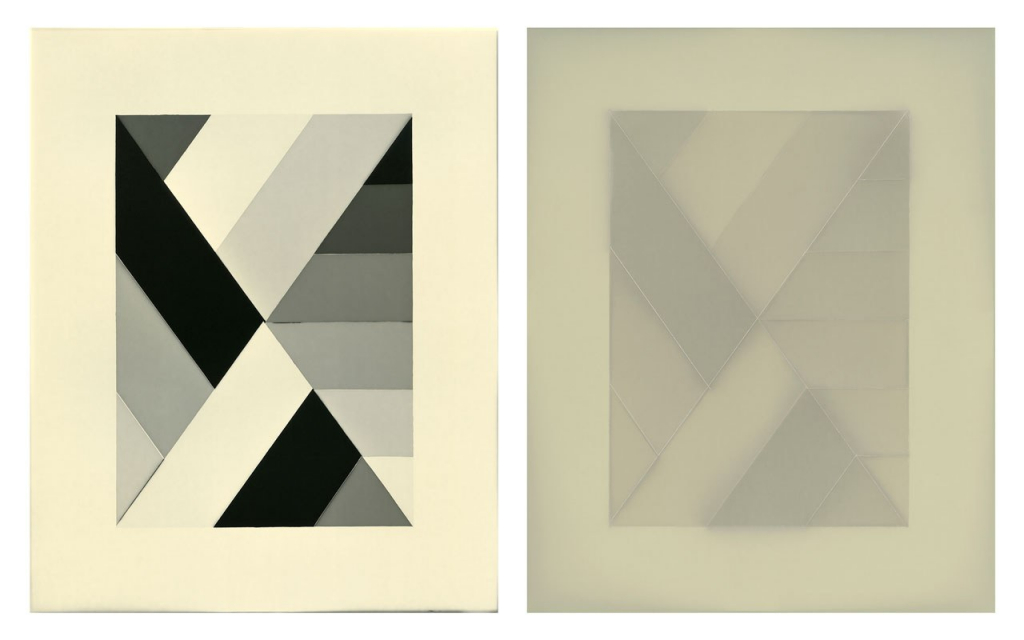Julie Weber | Permutations of Light
November 9, 2020

Here I confess my undying love for the photogram. From Moholy-Nagy’s experimental work in the 1920’s to Liz Nielsen’s color bombs in 2020, photograms have an almost mystical hold on my imagination. Why does this elemental form of photography sometimes cut to the soul? How can the remainder of a light beam, plus the trace of an object, equal what they do?
For an artist, the photogram often begins as play, which gives a light touch to its creation. But perhaps play is also the secret to its eventual weight and staying power. Creative play leaves something open to the unconscious, and photographers with an experimental bent can use the darkroom to bring shape to their internal imagery.
In a photogram, an artist brazenly invites herself into the hallowed space between the light and the paper. Julie Weber enters there, with geometric abstraction in her hands. Weber’s images begin as fairly simple designs, still familiar as grayscale photograms. But in their second iteration, she releases them to the wild, or rather, to the elements. She carefully lays down parameters and then relinquishes control, as the unfixed prints are exposed to the daylight. It’s a beautiful transmutation. Process is on display; transformation over time becomes the heart of the work.
Weber goes into her prints with a knife, scores them — her dear ones, peels back layers, and observes with the curiosity of a surgeon-in-training. In her permutations, loss is not a lament, but more of a sacred observation.
A digital image claims a kind of false immortality. But the material image, especially one that is fading, requires us to accept decay, even to embrace and enjoy it. The process of degradation is revelatory. And it’s dazzling, like the maple leaf, pushing out a garnet show before it hits the ground.
I look at these pictures with gratitude, for the helpful shift in perspective in how we might think about change. I feel the demand for so many wild shifts, in the photo industry, in the way we move in society, in what we expect from our lives. Change can be hard for a perfectionist who values tradition. But just look at its potential yield. Have these unexpected colors been lurking all along? Who knew that underneath the grey and behind the harsh contrasts, we’d find soft yellow, mauve and lavender?
-Lisa Woodward
View more of Julie’s work here

Three Permutations of Light (Ilford Multigrade Fiber) 3 sheets of gelatin silver paper (sheet 1: fixed photogram; sheet 2: unfixed photogram, scored; sheet 3: unfixed paper, partially peeled, Epson ink)



Two Permutations of Light (Luminos Pastel RC) 2 sheets of gelatin silver paper (sheet 1: fixed photogram; sheet 2: unfixed photogram, scored)

Two Permutations of Light (Unknown Paper) 2 sheets of gelatin silver paper (sheet 1: fixed photogram; sheet 2: unfixed photogram, scored)